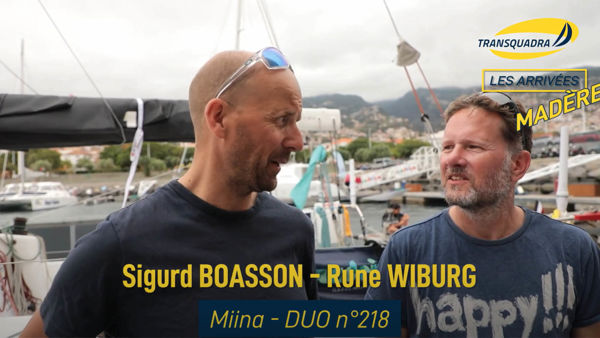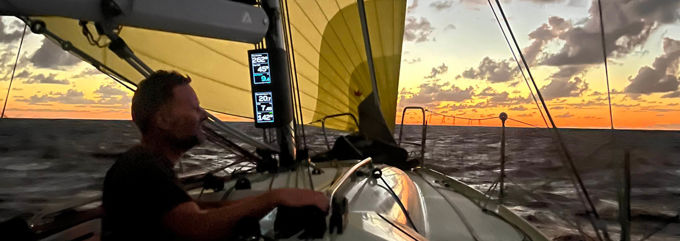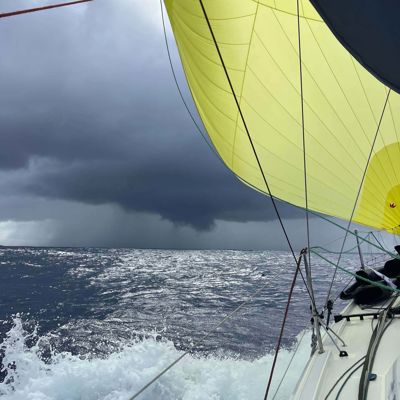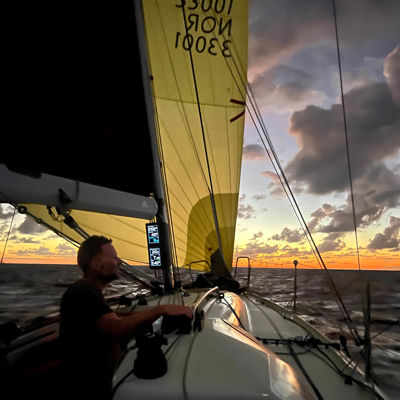

For the Norwegian duo Sigurd Boasson and Rune Wiborg, it was not initially clear that doublehanded offshore racing would be the happy medium, but it would all change with the pandemic. Shorthanded racing experience changed the view for Sigurd Boasson, and it also became the foundation of a project, which has just seen the finishing line after more than two and a half years’ worth of work.
- I have been sailing competitively for more than 20 years, and it all began with the X99 back in 2003. Since then, I’ve also had the X35, and we have been racing them for years. I have sailed with Rune for around 12 years now, but I was always set on the opinion that shorthanded sailing didn’t make sense when you could have a full crew, Sigurd says.
So how did he end up in a transatlantic doublehanded regatta, you might ask?
- It wasn’t until the pandemic that I gave the doublehanded sailing a real try. We had a fantastic team on the X35’s, but having to sail doublehanded taught me that it also has its charm that both sailors must master all parts of the trade rather than being more specialized on one or two positions as you would with a full crew. We had a great team and practiced every Tuesday, but a full crew also has an everyday life to work around. This is where doublehanded is a bit easier with fewer calendars to take care of, Sigurd explains.

Making the jump
Some successful experiences in, Sigurd and Rune got talking about the further possibilities of sailing doublehanded, and combined with lifelong dreams of crossing the Atlantic, a plan soon took shape: Sigurd and Rune wanted to race the Transquadra.
- A French race and a French boat. We went down to view some options and had set our sights on the JPK 10.30 or the Jeanneau Sun Fast 3300, and the way things went was that a team had their 3300 for sale and needed it gone fast, so we also made a quick decision. This was two and a half years before the start of the race, and while that might sound like a long time, we had plenty of jobs to do and lots to learn – including flying the asymmetric spinnakers.
As ever, the atmosphere around the long-distance community is super supportive, and getting Miina on the starting line in France is also the product of supportive individuals, Sigurd states:
- We had much to learn and do. We have had many good chats with Simen Løvgren and enjoyed a lot of his big knowledge from racing the Transat Jacques Vabre and other races. And we have always worked closely with our local sail loft, Seilmaker Iversen and Elvstrøm Sails. They were super keen on the project from the get-go and we could not have done it without them!

The challenge
The Transquadra is a special challenge – and different to most other transatlantic regattas. It’s for amateurs only, everyone must be over 40 years of age, and the race is held in two stages. It’s also raced every third year, which also holds its advantages for crews like Miina:
- There are a few factors with made us go with the Transquadra. It’s a gigantic challenge. No question about it. But it’s also an event that is made available for many racers – and as it is held in two stages, you can take part without having to leave your normal life and job for more than a month. I think this is great, and so is it that the event is run every 3rd year, making it possible for racers like us to find the budgets and the time needed to race it in a good way.
But that’s less than half the story. The other part is the challenge of racing across the Atlantic – a daunting task in its own right.
Racing across the Atlantic is, however, a tough game on the physical and mental side:
- This race was so hard to prepare mentally for. And while handling the sails and the boat is something that just flows, you still must make sure to get enough sleep and nutrition – and this is where it can get tricky, especially if something breaks. And something will break sooner or later, Sigurd smiles and adds:
We made it through by sleeping 90 minutes at a time – it might sound very limited, but it is enough to make it work. But I must also admit that when it’s dark and rough out there, then you also question yourself why you didn’t start playing golf… Anyway, it worked, but the big learning from all of this is the importance of keeping the motivation up. It hits you when something breaks and everything seems impossible. Along the way we had a sudden gust of 35 knots of wind. It ripped the tack off our biggest spinnaker, and we were forced to cut it. A big setback, and this is one of the places where the race is a mental game above everything else.

Setting sails for 2027
Combining the two stages, Sigurd and Rune finished 9th in class – out of 18 boats. A great first result for the duo, who are already planning for a new run in 2027.
- We are very happy to have made it through and finished in the middle by being 9th. It fully matched our target for the race – we knew it would take a lot to be in contention for the podium, and there’s a lot of work ahead to get up there, but we are happy and think we did a great job. It was amazing to race in a field of so fantastic people as we have here.
The support is everywhere, he adds:
- The race is held in French, and in many cases it is expected that you speak and understand French, which makes it even cooler when your competitors help you out and translate things simultaneously. You feel so welcomed and everyone is just a fantastic sport. And at the end of the day – the difference between what we have done previously and then the Transquadra is just night and day. Mega experience – we are already looking at improvements and plans for the next one, Sigurd Boasson ends.